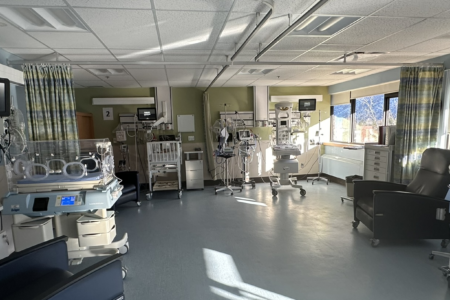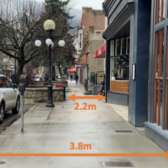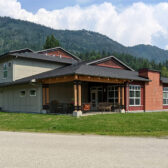Interior Health reduces its carbon footprint by collecting waste anesthetic gases
Royal Inland Hospital (RIH) in Kamloops has completed a three-year project that will see waste anesthetic gases (WAGs) collected in all 11 of its operating rooms, significantly reducing the hospital’s carbon footprint.
Anesthetic gases used for surgeries are a known potent source of greenhouse gas emissions that contribute to climate change.
Only five per cent of anesthetic gas is metabolized by the body, while the remaining 95 per cent is typically collected and vented out of the operating room and building.
“Until the anesthetic gas recovery project, our emissions reduction strategy had been focused primarily on our buildings’ systems,” said Lorne Sisley, corporate director, facilities management and operations.
“But when we started looking more closely at emissions from our operations, we noted anesthetic gases have a disproportionately high greenhouse gas emissions level. This new recovery technology will be one more step toward reducing our overall carbon footprint.”
Recovering WAGs from RIH’s 11 operating rooms is the equivalent of taking 221 to 280 passenger vehicles off the road a year – IH’s total vehicle fleet emissions for all of 2021.
Interior Health partnered with cleantech company Blue-Zone Technologies of Concord, Ontario for the three-year pilot project. Up to 100 per cent of the anesthetic gas that’s exhaled by a patient is collected in canisters in the operating room in Blue-Zone’s machines.
Once the canisters are full, they’re sent to Blue-Zone’s facility where the gases are liquefied and turned into generic anesthetic gas using a patented distillation process.
“This technology offers additional economic and supply benefits for hospitals, and also protects our health-care staff, communities and environment from the impact of anesthetic gases,” said Amanda McKenzie, manager of environmental sustainability at Interior Health and project lead.
With the successful implementation of this technology at RIH, Interior Health is focusing on the other 80 operating rooms managed across the Interior region.
Sisley added, “There are other sites we will be considering to make an even greater impact, plus there is the potential to change the anesthetic gasses we currently use to lower the initial emissions profile. We will be exploring other clinical operations as well, to ensure we are considering all opportunities to green our operations.”
For more information about Interior Health’s climate action vision and commitment to environmental sustainability, please visit: https://www.interiorhealth.ca/about-ih/climate-action


























